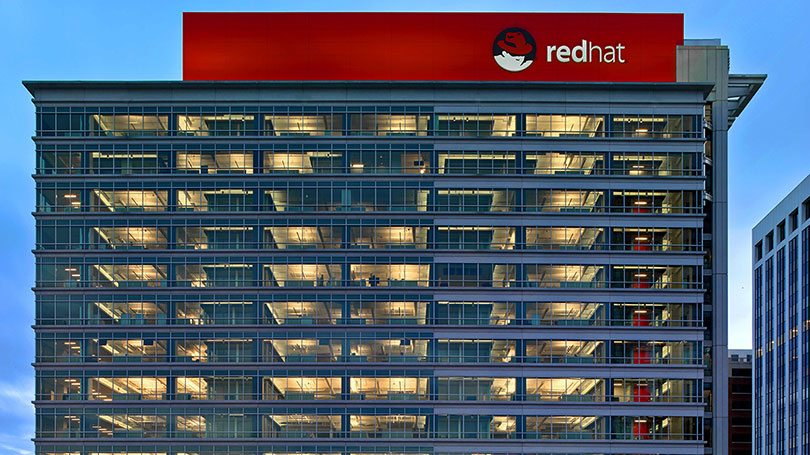Red Hat has announced the general availability of Red Hat Enterprise Linux 7.2, the latest release of Red Hat Enterprise Linux 7.
New features and capabilities focus on security, networking, and system administration, along with a continued emphasis on enterprise-ready tooling for the development and deployment of Linux container-based applications. In addition, Red Hat Enterprise Linux 7.2 includes compatibility with the new Red Hat Insights, an add-on operational analytics offering designed to increase IT efficiency and reduce downtime through the proactive identification of known risks and technical issues.
Security
Retaining Red Hat’s commitment to security, including meeting the needs of financial, government, and military customers, Red Hat Enterprise Linux 7.2 continues to provide new security capabilities and features.
True security requires both a secure foundation and secure configuration of systems. OpenSCAP is an implementation of the Security Content Automation Protocol that analyses a system for security compliance. The new Open SCAP Anaconda plug-in allows use of SCAP based security and configuration analysis during the installation process, ensuring a secure starting point for system deployment.
A critical part of secure distributed systems is being able to trust the address resolution performed by DNS servers. DNSSEC extends DNS to provide a secure chain of trust for address resolution. The Red Hat Identity Management system (IdM) now supports DNSSEC for DNS zones.
Networking
Networking performance in Red Hat Enterprise Linux 7.2 has been significantly improved — with throughput doubled in many network function virtualisation (NFV) and software defined networking (SDN) use cases. Other enhancements to the kernel networking subsystem, include:
- Tuning the network kernel stack to dramatically improve packet processing time, enable Red Hat Enterprise Linux 7.2 to perform at physical line rates in advanced (virtual and containerised) workloads.
- Inclusion of the Data Plane Development Kit (DPDK), which makes it possible to rapidly develop low-latency and high throughput custom applications capable of direct packet processing in user space for NFV and other use cases. Prior to this enhancement, systems were limited to running only one type of application (DPDK-enabled or traditional-network enabled.) Enhancements in Red Hat Enterprise Linux 7.2, specifically the introduction of a new bifurcated driver, now allow for both types of applications to be hosted on the same system thus consolidating physical hardware.
- The addition of TCP (DCTCP), a feature for solving TCP congestion problems in data centres that works smoothly across Windows- and Red Hat Enterprise Linux-based hosts to maximise throughput and efficiency.
Linux containers
Red Hat Enterprise Linux 7.2 features many improvements to the underlying container support infrastructure. Updates are included for the docker engine, Kubernetes, Cockpit and the Atomic command. In addition, Red Hat Enterprise Linux Atomic Host 7.2, the latest version of Red Hat’s container workload-optimized host platform, is available with most Red Hat Enterprise Linux 7.2 subscriptions.
Also available today is the beta of the Red Hat Container Development Kit 2, a collection of images, tools, and documentation to help application developers simplify the creation of container-based applications that are certified for deployment on Red Hat container hosts, including Red Hat Enterprise Linux 7.2, Red Hat Enterprise Linux Atomic Host 7.2 and OpenShift Enterprise 3.
System administration
As managing the modern datacenter at scale becomes increasingly complex, Red Hat Enterprise Linux 7.2 includes new and improved tools to deliver a more streamlined system administration experience. Highlighting these updates is the inclusion of Relax-and-Recover, a system archiving tool that enables administrators to create local backups in ISO format that can be centrally archived and replicated remotely for simplified disaster recovery operations.
Red Hat insights
Red Hat Enterprise Linux 7.2 is compatible with Red Hat Insights, an operational analytics service designed for the proactive management of Red Hat Enterprise Linux environments. Available for up to 10 Red Hat Enterprise Linux 7 systems at no additional cost, the offering is designed to help customers detect technical issues before they impact business operations by analyzing infrastructure assets and identifying key risks and vulnerabilities through continuous monitoring and analysis. Red Hat Insights provides resolution steps to help IT managers and administrators respond to these issues and potentially prevent future problems.
“With the launch of Red Hat Enterprise Linux 7 in June 2014, Red Hat redefined the enterprise open source operating system. Red Hat Enterprise Linux 7.2 continues this effort, delivering new capabilities for containerised application deployments and significant networking enhancements while retaining our focus on delivering a stable, reliable and more secure platform for the most critical of business applications,” said Jim Totton, Vice President and General Manager, Platforms Business Unit, Red Hat.


